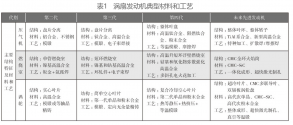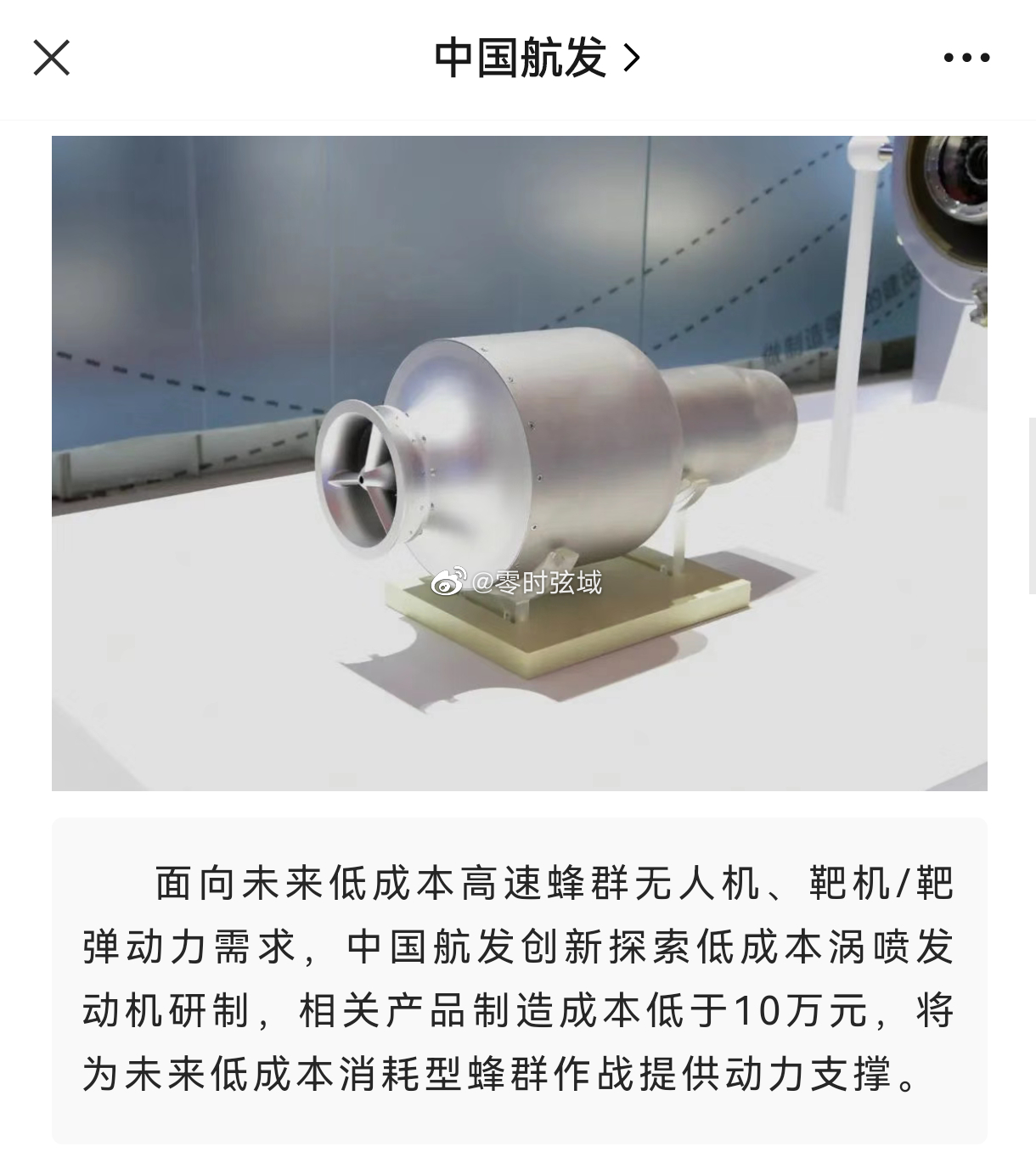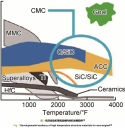You are using an out of date browser. It may not display this or other websites correctly.
You should upgrade or use an alternative browser.
You should upgrade or use an alternative browser.
Chinese Engine Development
- Thread starter jackbh
- Start date
They’re not outdated. You need different kinds of materials for different sections of the engine. Some stages in an engine require both high heat tolerance and high tensile strength. Others require more heat tolerance than tensile strength, and others require more tensile strength than heat tolerance. You pair the material with the mechanical requirements at the specific stage.High temperature alloy is kind of outdated now,the future material for turbine engine is all about composite materials
Some good reading
View attachment 104030
They’re not outdated. You need different kinds of materials for different sections of the engine. Some stages in an engine require both high heat tolerance and high tensile strength. Others require more heat tolerance than tensile strength, and others require more tensile strength than heat tolerance. You pair the material with the mechanical requirements at the specific stage.
True,different parts requires different materials

by78
General
Finally, more information on the small turbojet displayed at Zhuhai Airshow 2022. This is AECC's effort to produce a low-cost turbojet to power drone swarms and target drones. The cost per unit is below 100,000 RMB (14,500 USD), and this in turn makes drone swarms more affordable.


Can we all just agree that people suck and no one has figured out a flawless system and go back to talking engines…
Off topic and political posts deleted! Guys ... stop this!
So, I take this to mean that the WS-10C has superior performance to AL-31FM2, which produces 14.5 metric tons of thrust. This would put the WS-10C at around 15 tons, which is comparable to the AL-41F1/F1S. No comment on lifespan, so I would guess that it’s probably in the same ballpark as the AL-31FM2 of 1,000 hours MBTO and maybe anywhere from 2,000-4,000 hours life, maybe not as good AL-41F1/F1S but the gap has closed a lot and as Tirdent said, it’s well within a generation of each other at this point.Here's a video of what the deputy designer of J-20 said at Zhuhai Airshow:
Here's an English summary of what he said:
1) Engines are the heart of an aircraft, and engine performance (e.g. thrust) is crucial to the overall performance of a fighter aircraft.
2) The J-20 is now equipped with domestic engines, which is a milestone.
3) The design of an aircraft is inseparable from engine development. The two processes are intertwined. The airframe and engines must be matched and optimized for each other. Our design process takes into consideration future engine upgrades.
4) The overall flight performance of the J-20 with domestic engines is "superior and not inferior" to the J-20 powered by Russian engines.
The deputy designer was very careful with his words. What he actually said was that the overall flight performance of the J-20 airframe, when powered by domestic engines –– after engine/airframe performance matching and optimization –– is at least equal to or better than the J-20 airframe powered by Russian engines.
In other words, he never directly compared the WS-10C and Russian engines, much less saying that "WS-10C performance exceed all Russian machines we have used before", which by the way would include the Izdeliye-117s that come with China's Su-35s –– a dubious claim at best.
Our flagship military threads have a higher bar for accuracy and low tolerance for exaggeration and mis-representation. Please report only what's actually said, don't stretch, and don't be sensational.
So to summarize, performance wise the WS-10C has caught up to AL-41F1/F1S in terms of static thrust although it’s harder to say for dynamic thrust, with somewhat less service life. WS-10C has better performance than AL-31FM2, but not sure how that engines exactly compares to the AL-41F1/F1S because they’re made by two different companies, Salyut vs Saturn. Not to mention the AL-31FM2 was never adopted by the Russian Air Force from what I understand.
Although supposedly the main difference between the AL-41F1 and AL-41F1S is just the latter’s separate control unit. Also the latter service life of 4,000 hours was published but the former wasn’t, but since they’re very similar to each other, they probably have about the same service life. A big improvement over traditionally almost throwaway Soviet/Russian engines but still about half of what current Western engines like F119 and EJ200.
Even less is known about izd.30 and WS-15, but for izd.30, sources generally say that it’s supposed to have 30% better thrust/weight, 17-18% more “effective”, and better specific thrust, and fits in the same footprint as AL-41F1. So T/W of more than 10, and thrust of 17 tons, maybe up to 18 in emergency power. I would think WS-15 is probably broadly similar to this. Although, at this point the WS-15 has a chance of entering service before izd.30, since the Russian engines haven’t even entered state trials yet. Not guaranteed, but the test pace on the izd.30 has been really slow.
Although supposedly the main difference between the AL-41F1 and AL-41F1S is just the latter’s separate control unit. Also the latter service life of 4,000 hours was published but the former wasn’t, but since they’re very similar to each other, they probably have about the same service life. A big improvement over traditionally almost throwaway Soviet/Russian engines but still about half of what current Western engines like F119 and EJ200.
Even less is known about izd.30 and WS-15, but for izd.30, sources generally say that it’s supposed to have 30% better thrust/weight, 17-18% more “effective”, and better specific thrust, and fits in the same footprint as AL-41F1. So T/W of more than 10, and thrust of 17 tons, maybe up to 18 in emergency power. I would think WS-15 is probably broadly similar to this. Although, at this point the WS-15 has a chance of entering service before izd.30, since the Russian engines haven’t even entered state trials yet. Not guaranteed, but the test pace on the izd.30 has been really slow.
by78
General
So, I take this to mean that the WS-10C has superior performance to AL-31FM2, which produces 14.5 metric tons of thrust. This would put the WS-10C at around 15 tons, which is comparable to the AL-41F1/F1S. No comment on lifespan, so I would guess that it’s probably in the same ballpark as the AL-31FM2 of 1,000 hours MBTO and maybe anywhere from 2,000-4,000 hours life, maybe not as good AL-41F1/F1S but the gap has closed a lot and as Tirdent said, it’s well within a generation of each other at this point.
My post you quoted was a reply to a very specific strand of discussion. Strictly speaking, within the context of that strand, the deputy designer of J-20 never made a direct comparison between WS-10C and the Russian engines previously used on the J-20, much less explicitly stating that WS-10C is superior to AL-31FM2. The comparison he made was at the airframe level. I'm emphasizing this point again so that others don't mis-remember or misinterpret my original post as evidence of such a direct engine-to-engine comparison having been made by an official source.
As to your other points, especially regarding WS-10C being more performant than AL-31FM2, I don't have any disagreement with them.

